Bayon Temple is a grand ancient structure in Siem Reap that welcomes its visitors with big smiles. Extra-large smiles to be exact because the cheerful faces in this temple are not just gigantic—but are almost in every corner. The aura of positive vibes is definitely strong here. Merry eyes and wide grins will brighten your day as you delve into the mysterious art of this timeless structure.
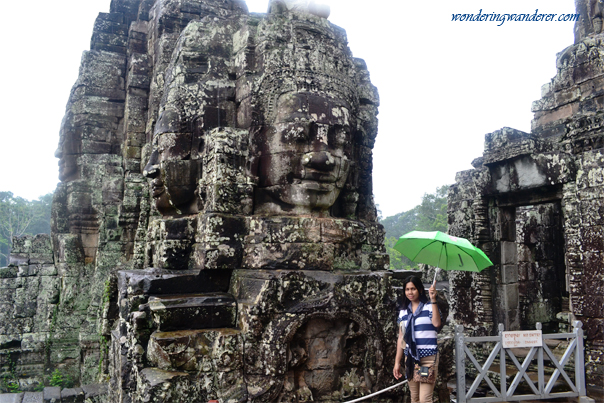

Beyond the art, is the rich culture of Cambodia. The visitors of Bayon Temple are entertained by the hospitable locals who are dressed in colorful traditional clothes. You’ll also get a good look and feel of the ancient Cambodian culture as you get a closer look at the performers’ artistic headdresses, bracelets and masks. Seeing the wall sculptures that are depicting the dancers of the past and having real individuals wearing what’s being depicted is simply wonderful.
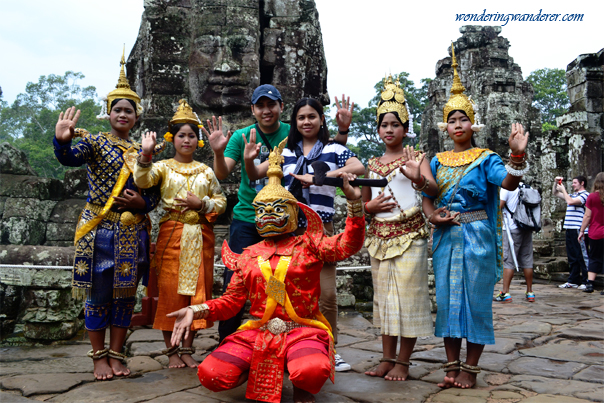
Bayon Temple’s Short History
The construction of the Bayon Temple is around the late 12th century or early 13th century A.D. This was ordered by the King Jayavarman VII as a dedication to Buddha. There was a disagreement about who the faces represent because of their resemblance to King Jayavarman VII and Bodhisattva (compassionate and enlightened being). The striking similarities of the 216 faces in the temple have led many scholars to conclude that they’re depicting King Jayavarman VII.

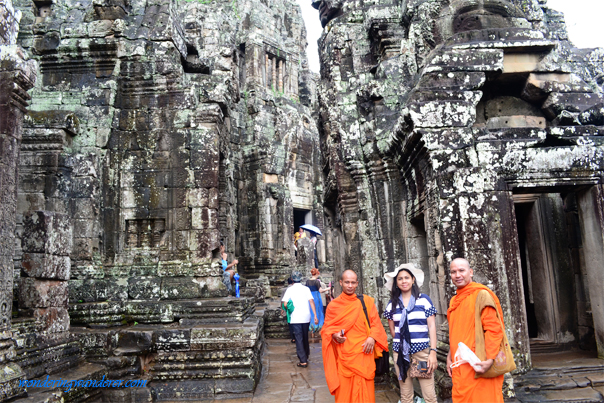
Bayon Temple was built around 100 years after the construction of Angkor Wat. Succeeding Hindu and Theravada Buddhist kings made some modifications in the temple based on religious preference. These modifications in different stages for many years made its architecture look disorderly, especially when viewed from afar. The libraries, square corners and upper terrace are later additions to the temple that wasn’t part of the original construction.


Exploring the Bayon Temple
We initially had a blurry view of the Bayon Temple because it was raining when we got there. We wondered why there was a queue of visitors from afar and we found out that getting inside the temple is a bit challenging. The entry point is small and its path is slippery because of the rain. We had to step on small pathway rocks so I ended up getting a bit wet because my wife and I can’t share the umbrella.

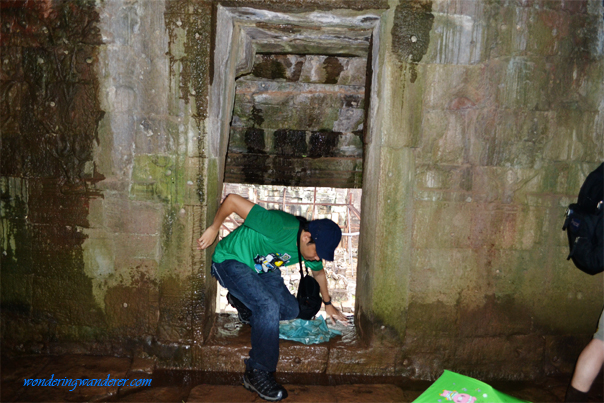
After getting inside, we saw that the path was more convenient. Most parts of its interior are wet because the water can penetrate its roofs. They’ve even put up some wooden stairs to make it easier for the tourists to climb up because the original stairs have big gaps. The walls were filled with creatively sculpted carvings that depict their way of life.

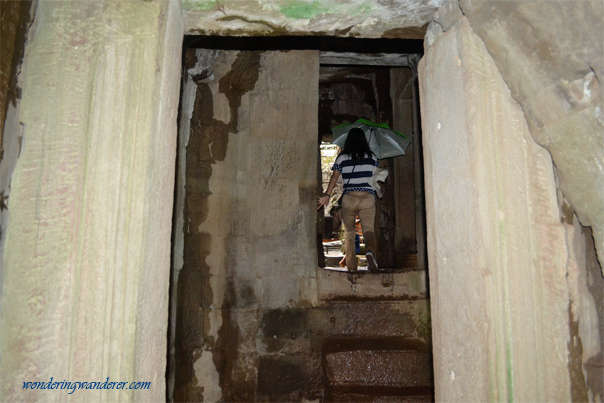
Gigantic Faces Up Close
We were thrilled to reach the top so we can have a closer look at the gigantic faces. When we finally got there, we were definitely not disappointed. The craftsmanship and size of the sculpted faces were astonishing. These monumental pieces of art brought a smile on our faces and they all smiled back at us. You can sense the warmth and friendliness in Cambodia’s culture because of their gentle smiles and serene faces.
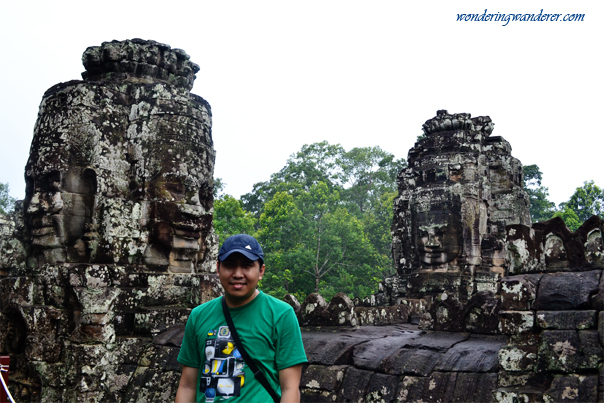
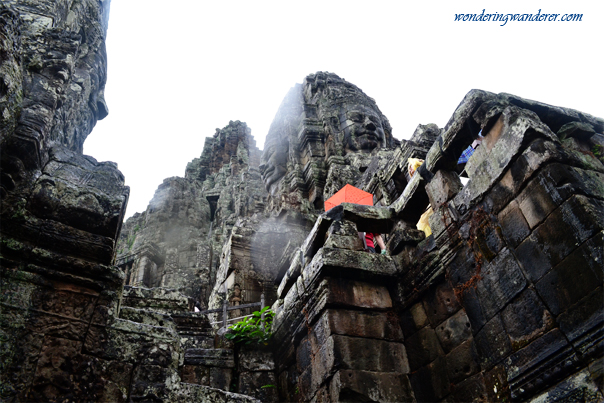
Since it was our first time to visit this temple, we didn’t really know what to expect. We know that there are large faces in the temple but didn’t expect them to be as many as 216. The towers that have huge faces in all four corners reminded me of Mount Rushmore. Getting to the part where you’ll see the large faces around you looked like a fantasy movie scene. They’re definitely big but not intimidating. In fact, they’re actually comforting because of their closed smiling eyes and gentle smiles.

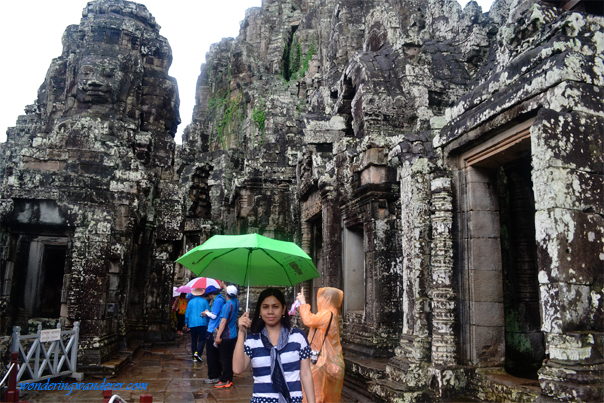
Murals and Statues
Beyond the giant faces are the wonderfully sculpted images on its walls. Aside from dances, they seem to share stories about wars and their livelihood. Small Buddha statues wearing robes can be found as well. It’s sad to see that some statues are headless not because of natural means but because they were stolen by art thieves. Getting targeted by burglars says a lot about the great quality and value of the historical artifacts in this temple.

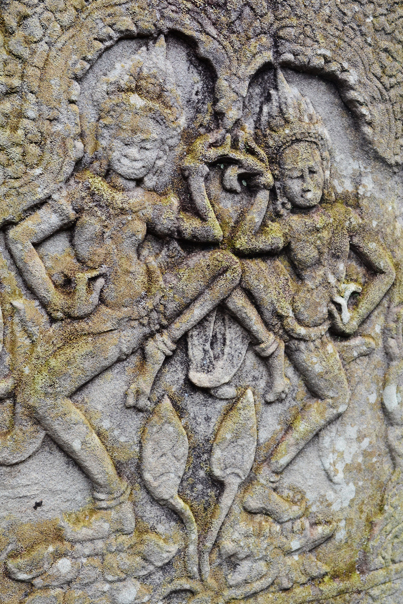

We had a wonderful time exploring this temple because of our fascination with ancient civilizations. Despite its wide size, we never really felt tired exploring the entire complex. Bayon Temple is actually inside the Angkor Thom complex which I believe is just slightly smaller than Angkor Wat. A visit here takes you to the glorious ancient past of Cambodia that is truly memorable.

2 thoughts on “Bayon Temple and its Smiling Gigantic Faces”